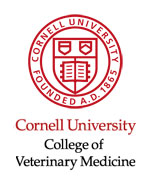"Introduction of Foot-and-Mouth Disease-Infected
Buffalo into the Save Valley Conservancy in Zimbabwe: Success
or Failure?"
Chris Foggin and G. Connear
A total of 618 buffalo (Syncerus caffer), known to be carrying
foot-and-mouth disease and originating from the west and
southern regions of Zimbabwe, were released into the Save
Valley Conservancy in the south-east region of Zimbabwe between
1995 and 2002. This Conservancy consists of 24 different
titles deeds with multiple ownership. It is 3420 km2 in area
and is stocked with numerous other species of wildlife. On
veterinary instructions to facilitate the buffalo release,
all livestock was removed, and a double, electrified fence
was constructed around the 312 km perimeter of the Conservancy:
the inner fence being 1.2 m high with 6 strands and the outer
fence 1.8 m high with 12 to 14 strands. Despite careful fence
maintenance, an outbreak of foot-and-mouth disease occurred
in cattle adjacent to the Conservancy within two years of
the initial release. Subsequent to that, a further four outbreaks
of the disease have occurred within 10 km of the outside
of the perimeter fence, though not all of them appear to
have originated within the Conservancy. Ongoing sero-surveys
of wildlife indicate that foot-and-mouth disease virus circulates
widely in eight species of antelope, and especially greater
kudu (Tragelaphus strepsiceros), which have shown 34% sero-prevalence.
Since the year 2000, the continuing land crisis in Zimbabwe
has further facilitated spread of this disease with some
22% of the Conservancy being occupied against the owners’ wishes,
resulting in the destruction of 80 km of the perimeter fence.
There are presently over 5000 cattle within the Conservancy
and many wildlife animals have been illegally killed. It
is concluded that, to date, this buffalo introduction has
had more failures than successes.
|
|











